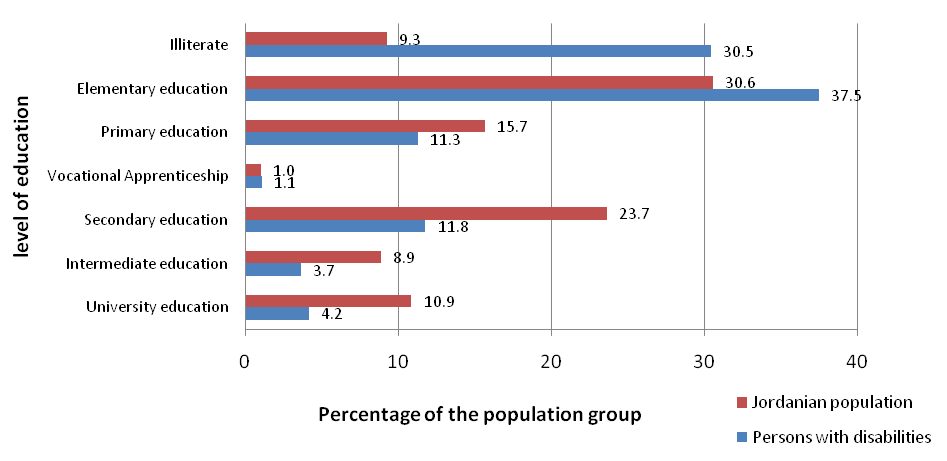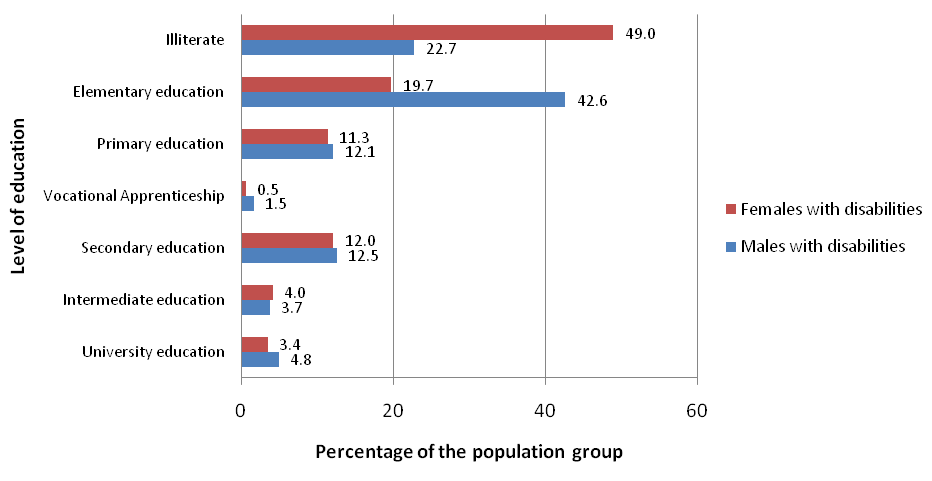جدول المحتويات:
An Overview of the Situation for Primary and Secondary Education
Statistics and indicators on the educational levels of persons with physical disabilities point to the fact that they face a number of obstacles in accessing and remaining in the educational system.
Figure IV. Educational level of persons with disabilities compared to the general population

Source: Department of Statistics (DOS), 2004.
Statistical data indicate that the educational level of persons with disabilities is significantly lower than the national average (see figure IV). Specifically, 30.5 per cent of persons with disabilities are illiterate, compared to a national illiteracy rate of 9.3 per cent. In addition, 37.5 per cent of persons with physical disabilities are limited to elementary education, as opposed to 30.6 per cent of the general Jordanian population. Regarding secondary education, a modest 11.8 per cent are enrolled in secondary education, compared to 23.7 per cent of the national population. The low levels of enrolment in vocational apprenticeship, whether among the general population or among persons with disabilities, can be attributed to the low prestige and value attached to vocational training in Jordan.
Figure V. Educational level of Jordanians with disabilities aged 15+ by gender

Source: Department of Statistics (DOS), 2004.
Moreover, the data reveal a gender gap in the population with disabilities aged over 15 years (15+). Figure V reveals significantly lower educational attainment among women with physical disabilities. The illiteracy rate for women with physical disabilities is the most alarming figure, at 49.0 per cent of the female population with disabilities (amounting to 3,877 women with physical disabilities), and is therefore significantly higher than the level of illiteracy rates among the national population, at 9.3 per cent, and among men with physical disabilities, at 22.7 per cent (amounting to 3,328 men with physical disabilities).
According to these statistics, out of a total of 7,205 illiterate persons with disabilities, 3,877 are women. In percentage terms, women account for 53.8 per cent of all illiterate persons with disabilities, while they constitute only 37.9 per cent of the total population with disabilities. Overall, the comparison between these two figures shows that while women are underrepresented among persons with disabilities, they are overrepresented among illiterate persons with disabilities.